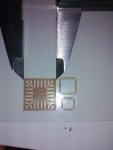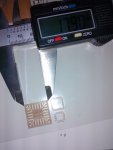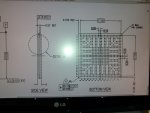- Joined
- Aug 30, 2008
- Messages
- 6,891
- Points
- 83
I was talking to Laen over at OSH Park and he and a friend have been working on using a 40W CO2 laser to cut PCB stencils. However, every time they try, their stencil ends up getting warped.
They are cutting kapton.
Would anyone know why this is happening (obviously from the heat) but why it's happening to them while others can make stencils fine.
They are cutting kapton.
Would anyone know why this is happening (obviously from the heat) but why it's happening to them while others can make stencils fine.








